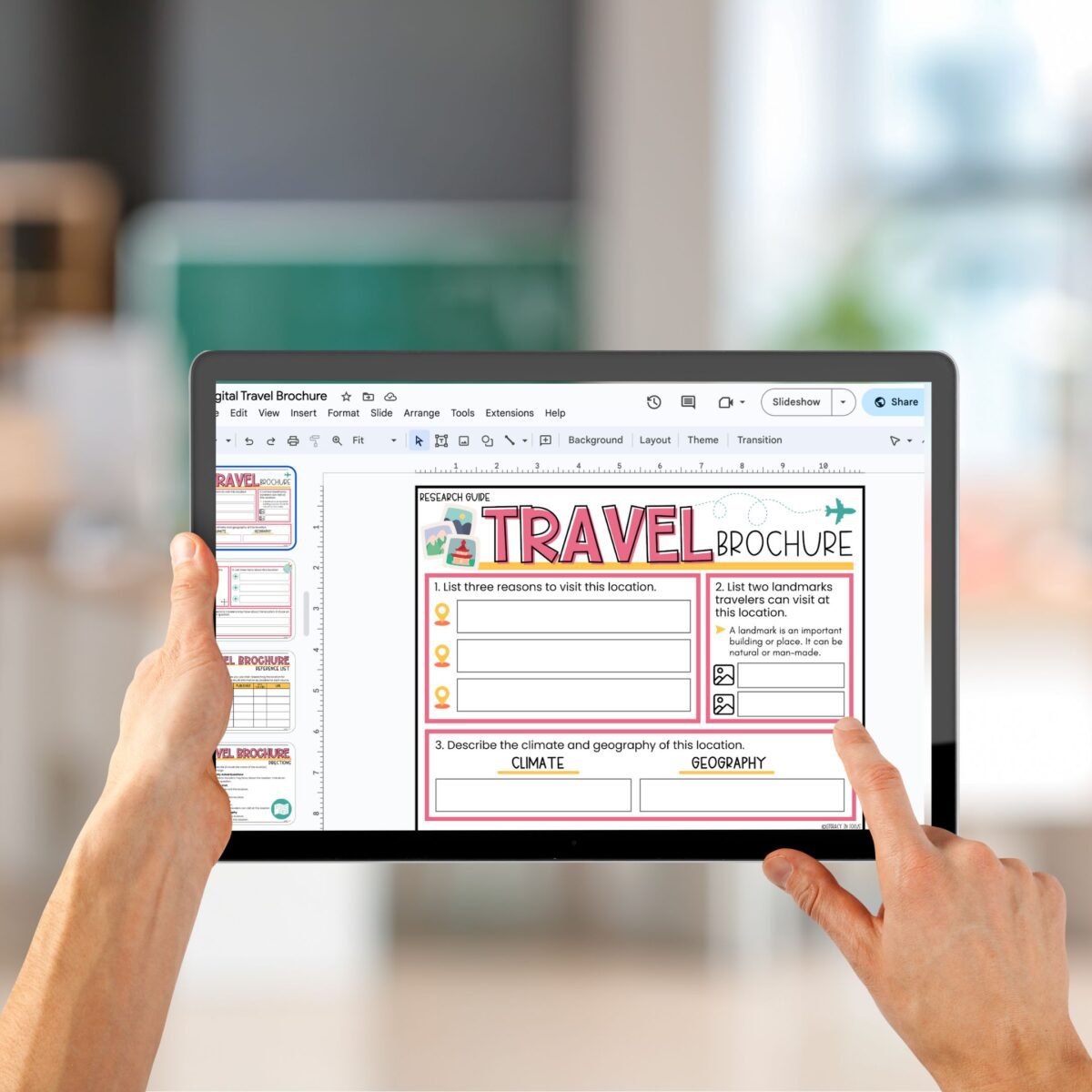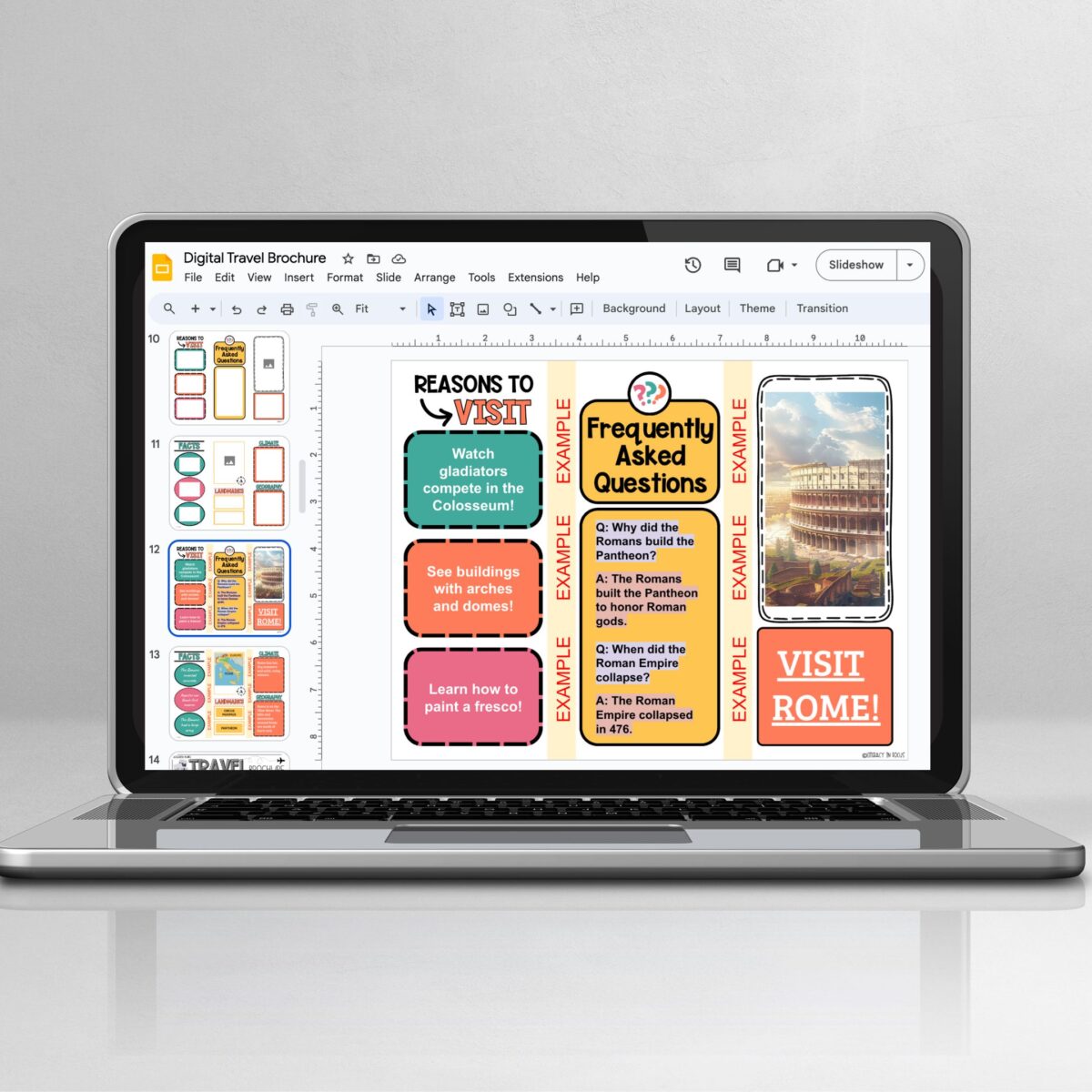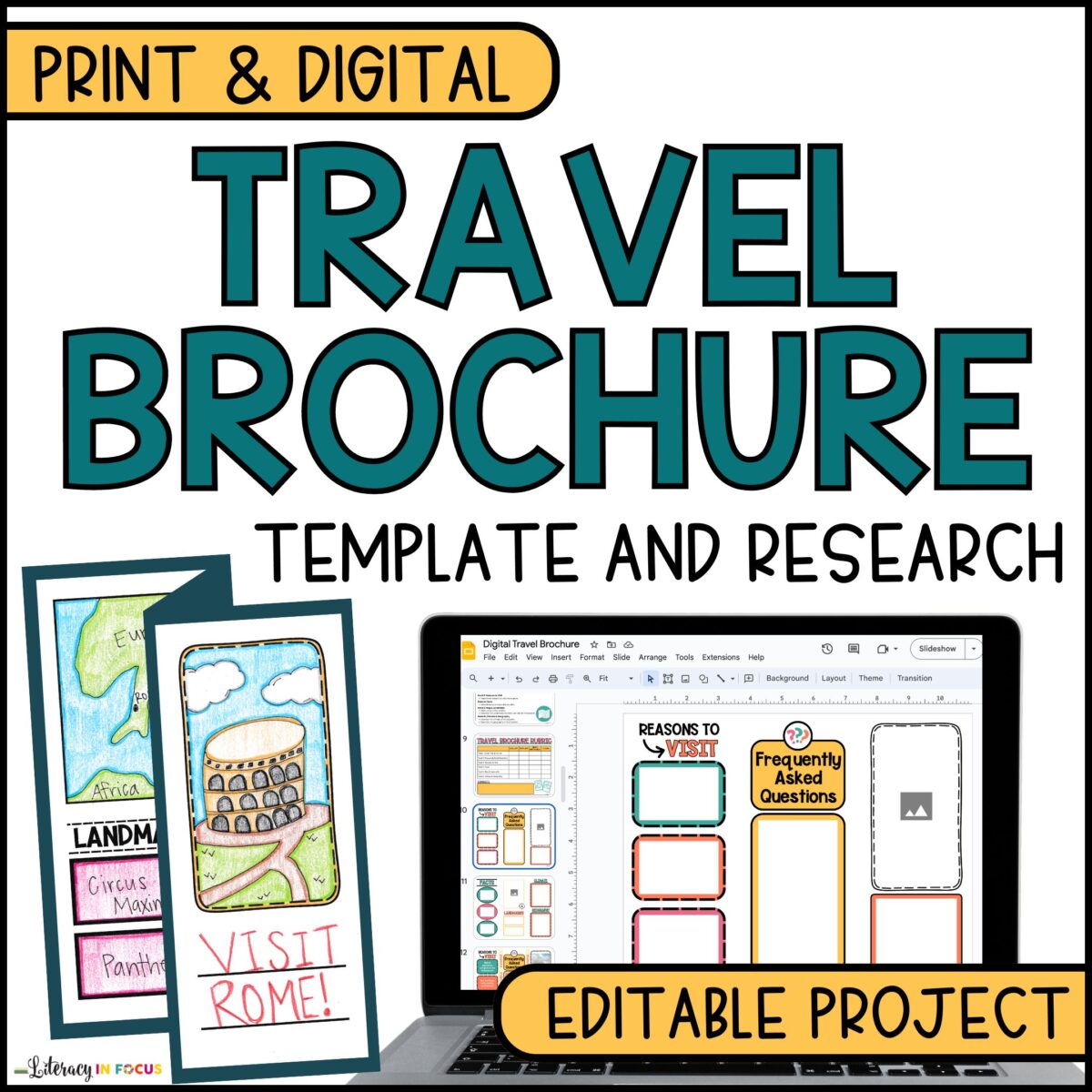
Travel Brochure Template & Research Project
Are you looking for an exciting project to engage your students and assess their learning? Try a travel brochure project! It’s perfect for upper elementary and middle school students, and it can be used across grade levels and content areas. The travel brochure project explained below is designed to support students through each step of the research and writing process, making it a valuable assessment tool for a variety of educational settings.
Objectives:
- Students will demonstrate understanding in a unique and creative way.
- Students will produce writing that is clear, concise, and appropriate for the task, purpose, and audience.
- Students will use technology to strengthen research skills.
- Students will critically evaluate information from multiple sources.
- Students will use design, organization, and analysis to convey information clearly and accurately.
Materials:
Structured Research Guide: A structured research guide will support students in finding and recording relevant information. To scaffold learning, the research guide should clearly align with the information required for the travel brochure.
Reference List: A reference list with specific source requirements (author, title, publisher, date published, and URL) will reinforce the importance of evaluating and recording sources during the research process. Advanced students can use easybib.com to generate a citation for each source.
Travel Brochure Directions: Providing specific directions for each panel of the travel brochure will help students stay focused on the necessary brochure requirements.
Travel Brochure Template: It is important for the brochure template to clearly align with the research guide to support students with the synthesis and transfer of information.
Grading Rubric: Review the grading rubric early and often to make sure students clearly understand the project expectations. A four-point rubric with space to assess each brochure panel and writing conventions works well.
Travel Brochure Example: An example travel brochure will help students visualize what their final product might look like.
Content:
(Panel 1) Cover Title and Image
(Panel 2) Frequently Asked Questions: The frequently asked questions portion of the brochure project requires students to think critically about the location. Students will use their research findings to write two questions travelers may have about the location. Students will also need to provide an answer for each question.
(Panel 3) Reasons to Visit: Encouraging travelers to visit the location gives students an opportunity to apply what they have learned. To do this, students will provide travelers with three reasons to visit the location.
(Panel 4) Facts: Students will write three interesting facts about the location to show that they can clearly and accurately convey information.
(Panel 5) Map and Landmarks: Students will provide travelers with a map of the location and two landmarks to visit. This will reinforce map skills and give students a chance to demonstrate learning in a creative way.
(Panel 6) Climate and Geography: Including a brief summary of the climate and geography of the location will show that students can produce writing that is clear and concise.
Teacher Tip:
Before students start researching a location for the travel brochure, take a minute to review the importance of using credible sources. If students need more in-depth instruction, you can teach them about website credibility with this free evaluation checklist.
Project Ideas:
Teachers love travel brochure projects because they work well across content areas and grade levels. It’s also fairly easy to align a brochure project with Common Core and state standards. Finally, travel brochure projects appeal to a wide-range of learners. They are easy to customize and differentiate as needed. Here are some travel brochure project ideas that might work well in your classroom:
- End of the Year Enrichment Activity
- History/Social Studies Unit Assessment
- Independent Study Project
- State/Region/Country Report
- Collaborative Project
- Supplemental Assessment
- Cross-Curricular Project
- Student Choice Project
Travel Brochure Research Project
Tested in over 5,000 classrooms! Reinforce research and writing skills with an interactive project that is designed to work with ANY location (historical or present-day). Your students will love creating their own unique travel brochure!
Why Teachers Love this Project:
✏️ “I have used this resource for several years at the end of the school year to wrap up our US History unit. Students are engaged and really enjoy the choice and collaboration.”
✏️ “My students enjoyed using this template as a way to research their project! I plan to use it with all of the grades. I think they will all enjoy using it!”
✏️ “My students loved using this product. We used as the end task to the novel, Clean Getaway. The students created brochures to share the places the main characters had been. Thank you!”
Common Core Anchor Standards for Writing:
W.2 Write informative/explanatory texts to examine and convey complex ideas and information clearly and accurately through the effective selection, organization, and analysis of content.
W.4 Produce clear and coherent writing in which the development, organization, and style are appropriate to task, purpose, and audience.
W.5 Develop and strengthen writing as needed by planning, revising, editing, rewriting, or trying a new approach.
W.6 Use technology, including the Internet, to produce and publish writing and to interact and collaborate with others.
W.7 Conduct short as well as more sustained research projects based on focused questions, demonstrating understanding of the subject under investigation.
W.8 Gather relevant information from multiple print and digital sources, assess the credibility and accuracy of each source, and integrate the information while avoiding plagiarism.
W.9 Draw evidence from literary or informational texts to support analysis, reflection, and research.








